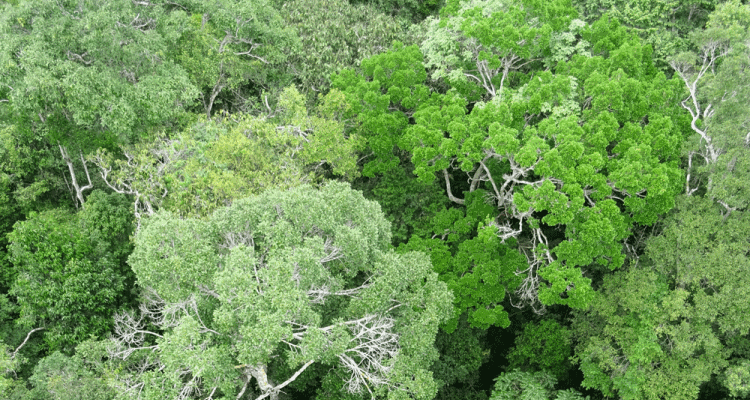
Press release
Amazon forests stabilise each other during drought
The Amazon rainforest stabilises itself, especially during dry periods, reports a new study by Wageningen University & Research, and Utrecht University in the Netherlands, in collaboration with the University of Goettingen in Germany and the Open University in the Netherlands, today in Nature Climate Change.
It was already known that evaporation in Amazonian rainforests is among the highest on Earth and that part of this evaporation contributes to rainfall in the basin. “A novelty in this research is that we could analyse these moisture flows above the Amazon on an unprecedented level of detail. In this way we could map exactly where and when forests in the Amazon generate rainfall”, tells Obbe Tuinenburg, Assistant Professor at Utrecht University and an expert in such atmospheric moisture flows.
Deep groundwater maintains evaporation
This analysis revealed a number of important results, such as the finding that the contribution of the Amazon forest to rainfall increases when conditions become drier. “During dry spells the trees continue to have access to deep groundwater, thus maintaining evaporation”, clarifies Stefan Dekker, Associate Professor at Utrecht University and Professor at the Open University, the Netherlands.
This study sheds new light on the significance of the Amazon rainforest for the climate system. “In recent years we have seen increasing droughts in the Amazon, resulting in widespread forest fires. Now we better understand how important the forest is in alleviating these droughts”, explains Arie Staal, whose PhD research includes this research.
“It is feared that in the Amazon, irreversible transitions from a forest to a savannah ecosystem can take place. Our analyses show that the Amazon forest prevents such tipping points especially in the southwestern part of the basin”, Staal points out.
Southern part of the Amazon essential for stability
“Much recent work on the effects of deforestation in the Amazon was directed at local effects, but we highlight the regional effects of deforestation”, Tuinenburg explains. “We find that especially forests in the part of the Amazon where most deforestation takes place –the southern part– are essential for maintaining rainfall over the most sensitive forests in the region”, Staal adds.